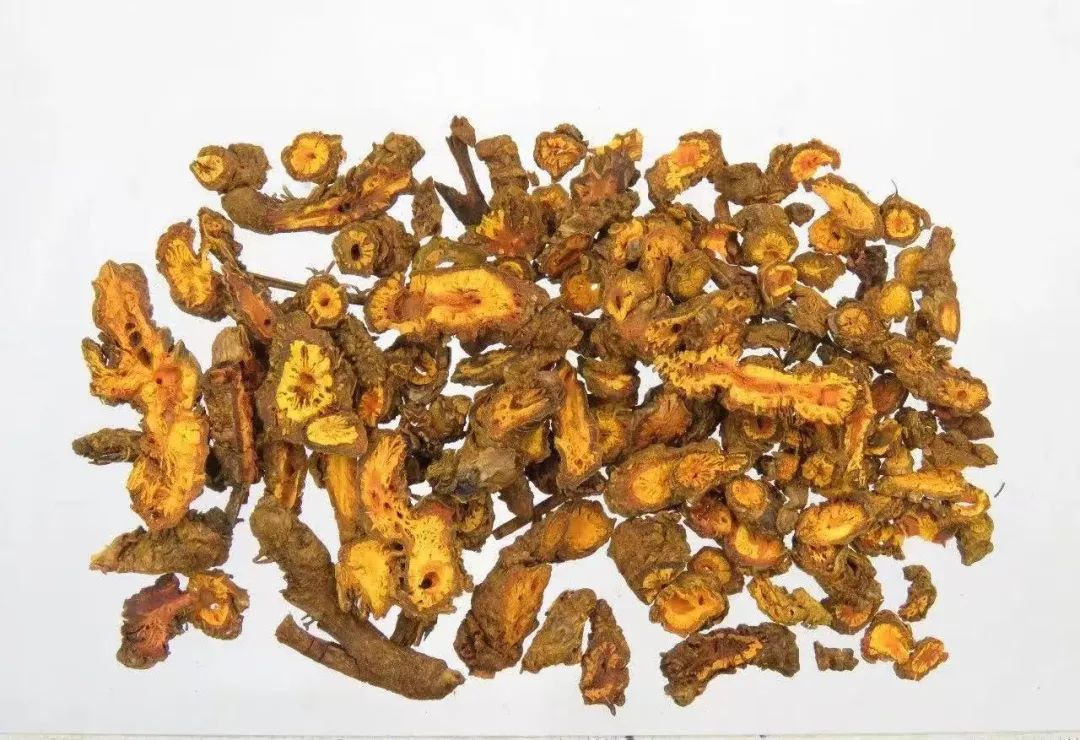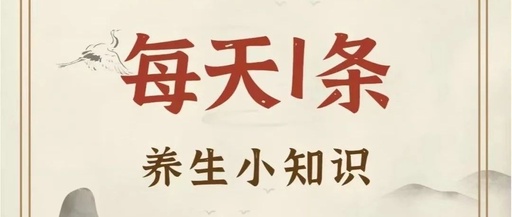Huang Lian (Coptis chinensis) is a perennial herbaceous plant from the Ranunculaceae family, commonly including varieties such as Huang Lian, San Jiao Ye Huang Lian, and Yun Lian, with the rhizome being widely used. It has a bitter and cold nature, primarily acting on the heart, liver, stomach, and large intestine meridians, with effects of clearing heat, drying dampness, purging fire, and detoxifying.
Huang Lian is renowned for treating symptoms of fire heat, damp-heat, blood heat, and heat toxin, but its other therapeutic effects are often overlooked. The author summarizes the main therapeutic actions of Huang Lian, specifically including the following aspects.

Damp-Heat Syndrome
This herb has a bitter and cold property, which can dry dampness and clear heat, making it effective for various damp-heat syndromes, particularly in clearing damp-heat from the stomach and intestines. Its heat-clearing and damp-drying effects can be used in the following three situations.
1. Huang Lian can treat symptoms of damp-heat obstruction, such as the San Xie Xin Tang syndrome described in the “Shang Han Lun”, usually combined with Ban Xia (Pinellia ternata) and Gan Jiang (Dried Ginger), where warm and acrid herbs help harmonize the stomach qi and relieve fullness in the spleen and stomach. In cases of warm heat accumulation with significant damp-heat in the gastrointestinal tract, presenting with symptoms like cholera, vomiting, and diarrhea, it can be combined with Hou Po (Magnolia Officinalis) and Ban Xia, as in the Lian Po Yin from the “Huo Luan Lun”, to help regulate the spleen and stomach and eliminate dampness and heat.
2. Huang Lian is also the first choice for treating damp-heat diarrhea, especially for dysentery caused by damp-heat. It has a strong inhibitory effect on pathogenic microorganisms such as dysentery bacillus and Vibrio cholerae. Ancient texts state, “The ancient formula uses Huang Lian as the best treatment for dysentery,” and it has been listed as a commonly used medicine for dysentery in medical books throughout history.
This herb can be used alone for treating dysentery, or combined with Mu Xiang (Aucklandia) to form Xiang Lian Wan; it can also be combined with Ge Gen (Pueraria), Huang Qin (Scutellaria), and Gan Cao (Licorice) to create Ge Gen Qin Lian Tang; or with Shao Yao (Peony), Huang Qin, Da Huang (Rhubarb), Mu Xiang, and Dang Gui (Angelica) to form Shao Yao Tang, which is also a well-known formula for treating dysentery.
3. For treating damp eczema, which is caused by damp-heat invading the skin, this herb can be combined with Dang Gui, Chi Shao (Red Peony), Sheng Di (Rehmannia), Huang Bai (Phellodendron), Chan Tui (Cicada Slough), Ku Shen (Sophora), and Jing Jie (Schizonepeta) for internal use, or ground into a fine powder with Song Hu (Pine Resin) and Hai Piao Xiao (Cuttlefish Bone) to make an ointment for external application, which is very effective.
Fire Heat Syndrome
This herb is bitter and cold, with a property of clearing and descending, entering the heart, liver, and stomach meridians, making it an excellent choice for clearing heat, purging fire, detoxifying, and reducing swelling. It is primarily used to clear organ heat, often for conditions of excess heart and stomach fire, or liver fire.
For cases of heart fire rising, Huang Lian can be used alone in decoction, as in the Xie Xin Tang from the “Tai Ping Hui Min He Ji Ju Fang”; if the symptoms include restlessness, irritability, and even confusion due to excessive heat, it can be used with Huang Qin and Shan Zhi Zi (Gardenia) as in the Huang Lian Jie Du Tang from the “Wai Tai Mi Yao”; if heart fire is strong and kidney yin is deficient, leading to symptoms of insomnia and irritability, it can be combined with Shao Yao, E Jiao (Donkey-hide Gelatin), and Ji Zi Huang (Egg Yolk), referring to the Huang Lian E Jiao Tang from the “Shang Han Lun”; when heart fire rising is accompanied by sores on the tongue and mouth, or heat evil moving to the small intestine causing irritability and red urine, it can be combined with Zhu Ye (Bamboo Leaf) and Zhi Zi, similar to the Qing Xin Dao Chi San from the “Yi Zong Jin Jian”.
For symptoms of stomach fire rising, such as toothache accompanied by headache, facial heat, pain in the affected area preferring cold and disliking heat, even with bleeding and swelling of the gums, slippery and rapid pulse, red tongue with yellow coating, it can be combined with Dang Gui, Sheng Di, Dan Pi (Moutan), and Sheng Ma (Cimicifuga) as in the Qing Wei San from the “Lan Shi Mi Cang”. This formula helps clear stomach fire and alleviate related symptoms.
For treating vomiting due to stomach heat, it is often used with Ban Xia, Zhu Ru (Bamboo Shavings), and Ju Pi (Tangerine Peel), as in the Huang Lian Ju Pi Zhu Ru Ban Xia Tang from the “Wen Re Jing Wei”, to help regulate stomach qi and clear heat to stop vomiting.
For liver fire rising, it is often used with Wu Zhu Yu (Evodia) to treat symptoms of liver qi stagnation transforming into fire, such as pain in the hypochondrium, vomiting, and acid regurgitation, as in the Zuo Jin Wan.
Blood Heat Syndrome
This herb is bitter and cold, with excellent fire-purging and detoxifying properties. For bleeding disorders caused by heat forcing blood flow, it can be used with Huang Qin and Da Huang, as in the Xie Xin Tang from the “Jin Gui Yao Lue”, to treat hematemesis and epistaxis.
The “Bo Ji Fang” states that using Huang Lian alone as a powder, taken at a dose of one qian (3 grams), decocted in water, also has this effect, being more straightforward and precise.
Heat Toxin Syndrome
This herb is bitter and cold, with a strong heat-clearing and detoxifying effect. Modern pharmacological studies show that it has inhibitory effects on various pathogenic bacteria, thus it is often used to treat skin diseases caused by heat toxin accumulation, particularly effective in treating carbuncles and boils. For example, the Huang Lian Jiu Ku Tang from the “Wai Ke Zheng Zong” combines this herb with Jin Yin Hua (Honeysuckle), Huang Qin, and Lian Qiao (Forsythia) to treat abscesses and swellings internally, with effects of reducing swelling and alleviating pain.
Moreover, this herb is not only effective for internal use but can also be applied externally. The Huang Lian Gao from the “Yi Zong Jin Jian” is made from Huang Lian, Huang Bai, and Jiang Huang (Turmeric) to create a plaster for external application, combined with internal treatment for even more significant effects.
Lowering Blood Pressure and Blood Sugar
Modern pharmacological research has proven that Huang Lian has a certain blood pressure-lowering effect, with a mechanism related to the dilation of vascular smooth muscle. Clinical studies have found that in patients with hypertension and insulin resistance treated with Huang Lian Jie Du Tang, after one month of continuous use, the effective rate of blood pressure reduction reached 90%.
For treating hypertension due to excess heart and liver fire, using Huang Lian, Gou Teng (Uncaria), Aloe, Ze Xie (Alisma), Ge Gen, Xia Ku Cao (Selfheal), Yi Mu Cao (Leonurus), Long Dan Cao (Gentiana), and Bai Shao can achieve an effective rate of over 80%, with even higher symptom improvement rates.
Recent studies have found that Huang Lian has a blood sugar-lowering effect, with reliable efficacy. For example, taking Huang Lian extract tablets at a dose of 0.4 grams three times a day for 1-3 months, over 80% of patients showed a decrease in blood sugar, with significant alleviation of the three excesses and one deficiency symptoms.
The author treats early-stage diabetes with heat accumulation type or insulin resistance patients using Ge Gen Qin Lian Tang, which has a significant blood sugar-lowering effect.
For later-stage patients with both qi and yin deficiency, it is often combined with Huang Qi (Astragalus), Yu Zhu (Polygonatum), Tian Hua Fen (Trichosanthes), Ren Shen (Ginseng), Ge Gen, Shan Yao (Chinese Yam), and Gui Jian Yu (Dioscorea) to enhance blood sugar-lowering effects. Continuous use for 1-3 months shows a proportional increase in efficacy over time.
Eliminating Malnutrition
The “Yao Xing Lun” states that this herb “kills children’s malnutrition worms,” and the “Ri Hua Zi Ben Cao” mentions that it can be used in a steamed pill with pig stomach to treat children’s malnutrition. For pediatric malnutrition, adding this herb to a group of spleen and stomach tonics can enhance efficacy, serving to improve appetite.
Huang Lian is taken internally in decoctions at a dose of 5-10 grams, and for external use or in pills and powders, the dosage is appropriate. Excessive amounts can harm the stomach; it should not be used excessively; caution is advised for those with yin deficiency and internal heat, stomach deficiency with vomiting, spleen deficiency with diarrhea, and those with early morning diarrhea.■
 【Source: Guangdong Traditional Chinese Medicine】
【Source: Guangdong Traditional Chinese Medicine】

